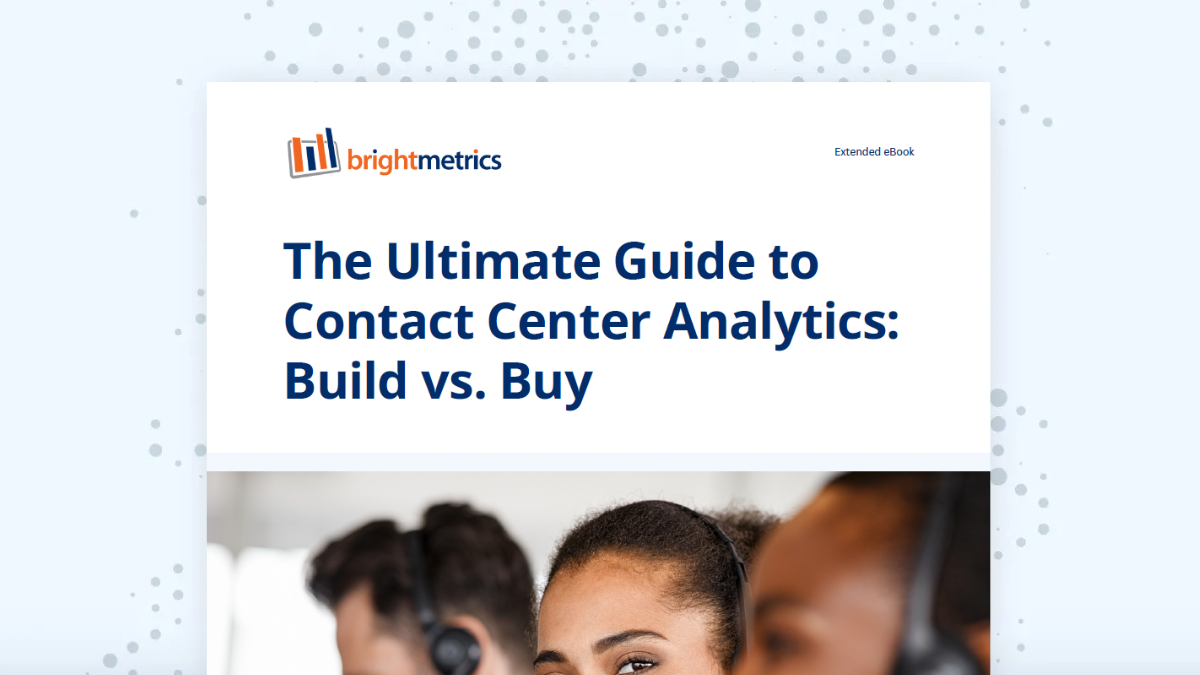Today’s call centers have high-pressure environments. They involve heightened customer expectations, increased transactions, and many other complexities. Handling and measuring daily activities and processes is essential to ensure smooth call center operations.
Critical Metrics for Call Center Operations
Call center metrics are key indicators used to measure and assess the efficiency of call center processes. Every organization uses its own set of metrics according to its standards and policies. The operations manager uses the insights gained from these metrics to know staffing requirements, analyze recent trends, and even identify peak hours. Metrics and KPIs also enable call center managers to measure the success of company initiatives.
For instance, key metrics help them understand how a recently launched service has affected call volume. Let’s further explore these 8 call center metrics that help track how an organization is meeting its goals.
1. Calls Handled
Handled calls refer to the number of calls taken by call center agents with no abandonment or blocking during a specific period. It involves the management of inbound and outbound calls. Businesses use this metric to help identify peak hours, staffing forecasts and even shifting trends in customer service. It is important to note that the total number of calls handled in a day also includes the calls taken by the IVR system.
2. Abandonment Rate
Abandonment rate is the percentage of calls disconnected by the caller while in the queue before interacting with the agent. For most organizations, an ideal abandonment rate falls between 4-8%. Higher abandonment rates imply callers waited too long for an agent to answer and customer satisfaction has declined. Long wait times can be attributed to understaffing or complicated routing menus and IVRs causing the caller to get frustrated and disconnect.
3. Average Speed of Answer (ASA)
The Average Speed of Answer refers to the average duration callers wait in a queue before getting connected to an agent. This metric also plays a part in your overall service level, where you look at the percentage of calls handled within your target speed of answer. Industry standard hovers at an ASA of 28 seconds.
However, typically a longer ASA results in a higher abandonment rate, customer dissatisfaction, as well as a negative employee experience.Learn more about how to improve your center’s Average Speed of Answer.
4. Peak Hour Traffic (PHT, or Busy Hour)
Peak Hour Traffic determines when the call center experiences the highest volume of calls during the day. Identifying your peak hours allows you to staff and train agents appropriately, resulting in lower ASA and abandoned calls.
To calculate PHT, look at your daily call volume, broken out by the hour. It can also be done daily by looking at the weekly call volume to find the week’s busiest day.
5. Average Handle Time (AHT)
Average Handle Time refers to the average length of the customer engagement. It involves the entire duration that the customer is on the call. This includes the transfers and hold times, along with the after-call work. Longer handle times can suggest that the agent is struggling to provide a resolution in an efficient manner.
Keep in mind consistently short handle times may show an agent cherry-picking calls if their transfer rate is much higher than the rest of the team. So this metric is essential in determining the customer experience and efficiency of operations.
6. Callback Messaging
This option is provided to the callers waiting in the queue to record their contact information for a call back from the agent. The callback messaging metric measures the number of call-back requests received daily.
This metric is another reliable performance indicator based on the center’s customer experience goals. Often it is best to have lower call-back messaging requests, as it means that the wait time to engage with an agent wasn’t excessively long. However, having a callback option is often appreciated no matter how long the wait time, as customers’ wait time thresholds consistently diminish.
7. First Call Resolution (FCR)
First Call Resolution is when your agent can fully resolve the customer query on the first interaction without the need of a follow up interaction. While this metric is simple to define, it can be more complex to measure. If the customer calls back within 24 hours, it may suggest that the first agent did not fully address the customer’s concern. Or it is also possible the caller needs to call back for an unrelated issue.
While FCR is often regarded as the cornerstone of call center performance, it is wise to dig into the details of agent and customer engagements to truly identify and understand resolution rates.
8. Occupancy Rate
This metric identifies the percentage of time an agent spends engaging with customers (calls, emails, chats, etc.) versus sitting idle and waiting for interactions. It essentially measures how busy your agents are during the day. Occupancy rate coupled with your service level will help you identify staffing level gaps.
Remember that a higher occupancy rate is not always better. There needs to be a little downtime for your agents to prevent them from getting burnt out.
Simplify Your Operations
As the world becomes increasingly information-intensive, it’s difficult to get relevant data that provides insight into call center operations. Customer engagement expectations continue to evolve, so it is crucial to assess and improve your contact center solutions and technology continuously.
Brightmetrics™ provides critical insights into the performance of your UC or Contact Center system by analyzing how the key performance metrics impact both agent and customer satisfaction.
Our historical and real-time analytics to help you create flexible dashboards and custom reports that are easy to understand, implement, and share. Learn more about our powerful analytics here.




